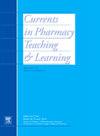Enhancing student knowledge and confidence through two sequential total parenteral nutrition active learning approaches
IF 1.4
Q3 EDUCATION, SCIENTIFIC DISCIPLINES
引用次数: 0
Abstract
Background
Total parenteral nutrition (TPN) is a complex topic involving clinical decision-making, safety checkpoints, and multiple calculations. The most effective methods to ensure student skill mastery in this space are not well described. The purpose of this study was to evaluate if the implementation of two total parenteral nutrition (TPN) activities for pharmacy students increased student knowledge and confidence. Additionally, to determine which activity student's preferred.
Educational activity
Third year pharmacy students participated in two TPN activities following the didactic lectures on the content: a team-based hand calculations activity utilizing a patient case scenario and a simulated TPN calculator activity on adjusting TPN components. Students completed pre- and post-assessments with ten knowledge-based and five confidence questions. On the post-assessment students completed open-ended questions on perceptions, preferences, and recommendations of the activities.
Evaluation findings
A total of 89 of 92 students (response rate: 96.7 %) completed both pre- and post-assessments for the TPN activities. Student performance on knowledge-based questions improved in seven out of ten areas. Student confidence improved in all five Likert-scale questions. Overall, 83 (93.3 %) of students preferred the hand calculation activity, 2 (2.2 %) preferred the KNIME activity, and 4 (4.5 %) had no preference.
Conclusion
Student knowledge and confidence improved after the implementation of two TPN activities. Students preferred the hand calculation activity over the KNIME calculator.
通过两种连续的全肠外营养主动学习方法增强学生的知识和信心
全肠外营养(TPN)是一个复杂的话题,涉及临床决策、安全检查点和多重计算。确保学生在这个领域掌握技能的最有效方法并没有很好地描述。本研究的目的是评估两种全肠外营养(TPN)活动的实施是否增加了药学专业学生的知识和信心。此外,确定哪个活动学生的首选。教育活动:药学三年级学生在讲授内容后参加了两个TPN活动:一个是利用患者案例场景进行的基于团队的手部计算活动,另一个是模拟TPN计算器活动,以调整TPN组件。学生们完成了前评估和后评估,包括10个知识基础问题和5个信心问题。在评估后,学生们完成了关于活动的感知、偏好和建议的开放式问题。评估结果92名学生中有89名(反应率:96.7%)完成了TPN活动的前后评估。学生在知识型问题上的表现在10个领域中有7个领域有所提高。学生在所有五个李克特量表问题上的信心都有所提高。总体而言,83名(93.3%)学生喜欢手工计算活动,2名(2.2%)学生喜欢KNIME活动,4名(4.5%)学生没有偏好。结论实施两次TPN活动后,学生的知识和信心有所提高。比起KNIME计算器,学生们更喜欢手工计算活动。
本文章由计算机程序翻译,如有差异,请以英文原文为准。
求助全文
约1分钟内获得全文
求助全文
来源期刊

Currents in Pharmacy Teaching and Learning
EDUCATION, SCIENTIFIC DISCIPLINES-
CiteScore
2.10
自引率
16.70%
发文量
192
 求助内容:
求助内容: 应助结果提醒方式:
应助结果提醒方式:


